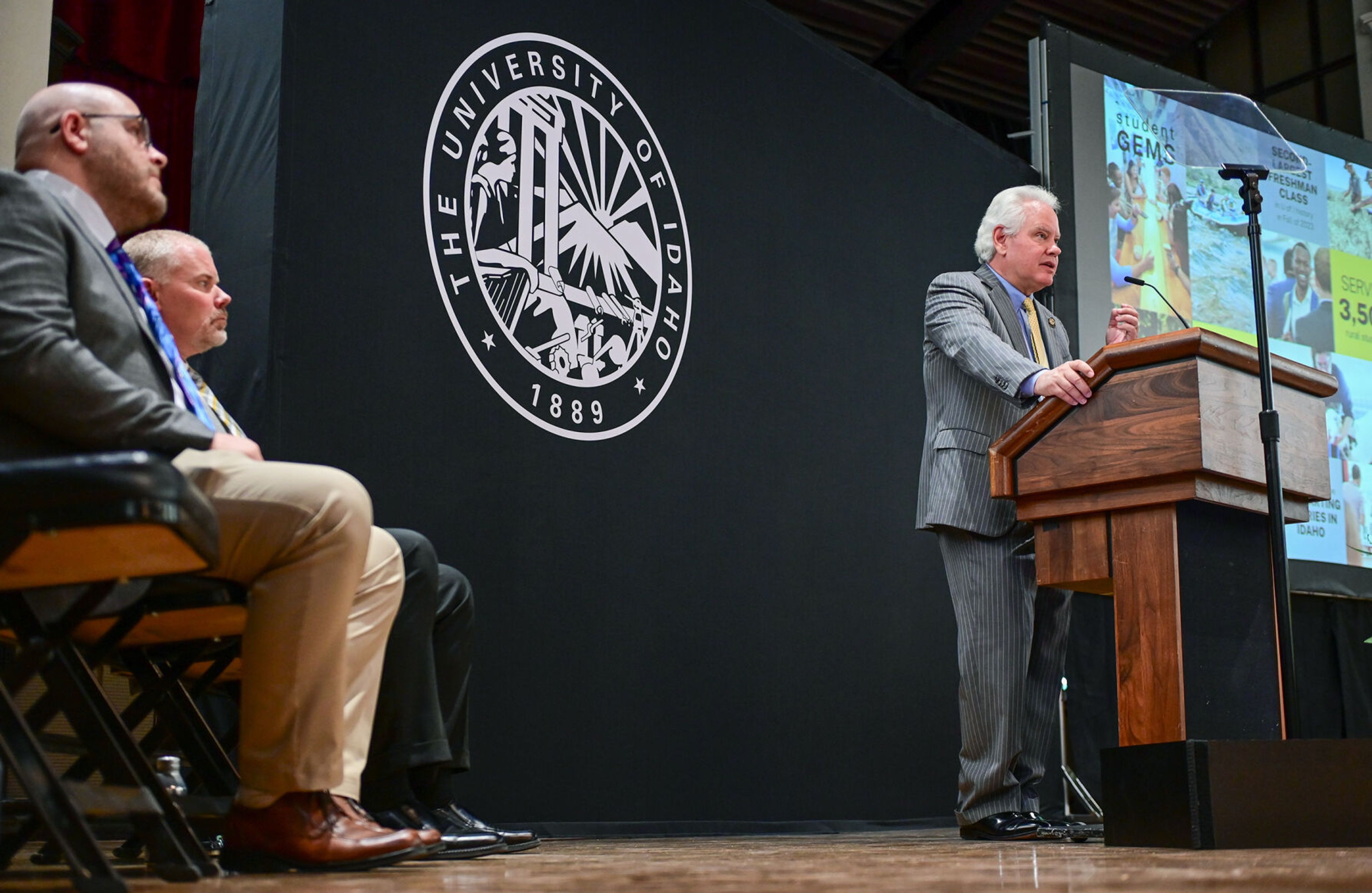Dual credit a double-edged sword for students
Idaho higher ed officials say program offers high schoolers a head start but limits financial returns
BOISE — A dual-credit program that allows Idaho high school students to take college-level classes at a reduced cost has a good side and a not-so-good side, lawmakers were told Monday.
On the one hand, rapid growth in the program is driving enrollment at the state’s higher education institutions. On the other hand, it’s not adding much to the revenue side of the ledger.
“That is a challenge, and it is a crisis,” said Bert Glandon, president of the College of Western Idaho in Nampa, during a presentation to the Legislature’s joint budget committee. “We’re in a revolution, a really disruptive state as far as higher education, and this will be one of the big drivers.”
Glandon noted that dual-credit students now account for a third of CWI’s total enrollment. However, because tuition for dual-credit classes is only $65 per credit hour, they contribute just 14 percent of the institution’s overall revenue.
Jeff Fox, president of the College of Southern Idaho in Twin Falls, cited similar figures at his institution.
“Over 50 percent of our students are dual credit, but they contribute 4.6 percent of our tuition revenue,” Fox said.
The Legislature has substantially increased its investment in dual-credit classes and other advanced opportunities in recent years. The goal is to expose students to college-level courses early on, in hopes they’ll continue on to postsecondary work after they graduate.
There’s also a desire to reduce the overall cost of higher education.
As a result, nearly half of all high school students now earn at least some dual credits by the time they graduate; that’s up from about 35 percent in 2013-14.
The increased demand has partially offset enrollment declines at Idaho’s community colleges, which typically have fewer students sign up for classes when the economy is good and jobs are plentiful.
At $65 per credit hour, though, dual-credit classes don’t generate any surplus revenue.
A 2018 cost study indicated that, except for Idaho State University, all of the state’s higher education institutions lose money on dual-credit classes when the direct and indirect costs are taken into consideration.
“Eight or nine years ago, CSI devoted 1.75 FTEs (full-time equivalent employees) to support dual-credit operations,” Fox said. “Now we have a staff of 15, including admissions coordinators, counselors and high school advisers.”
The growth in dual-credit classes is also changing how community colleges measure success.
Glandon, for example, said “retention” –- the percentage of students who return from one year to the next –- could soon become a meaningless term.
“That’s one of the measures we always look at,” he said. “But in the next 18 months to two years, dual credit is going to change the whole term.
I believe a majority (of high school graduates) will be coming to us with 35 credits already –- which means we won’t retain them for two years. We’ll polish them off in a semester or two, before they move on to a four-year college or university or into the workforce.
That will be a huge disruption to what we’ve constantly measured ourselves against.”
The State Board of Education has proposed changing the way the state funds higher education.
It wants to move away from an enrollment-based model to one that would reward institutions for the number of graduates they produce and other outcome-based statistics.
Newly elected Gov. Brad Little, however, said he wants to take the next year to study the proposal. He’s concerned it might create “perverse incentives” for the institutions. Until then, he’s recommending a $7 million increase in the state’s Opportunity Scholarship program for fiscal 2020. That would be enough to fully fund the program, so eligible students could receive a scholarship award.
William L. Spence may be contacted at bspence@lmtribune.com or (208) 791-9168.







